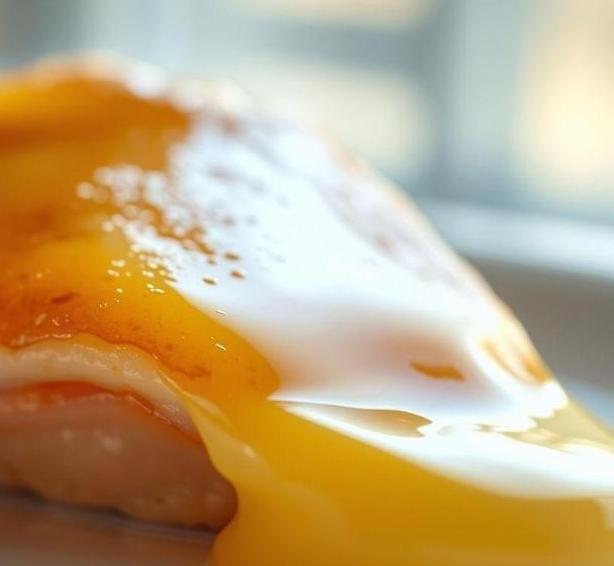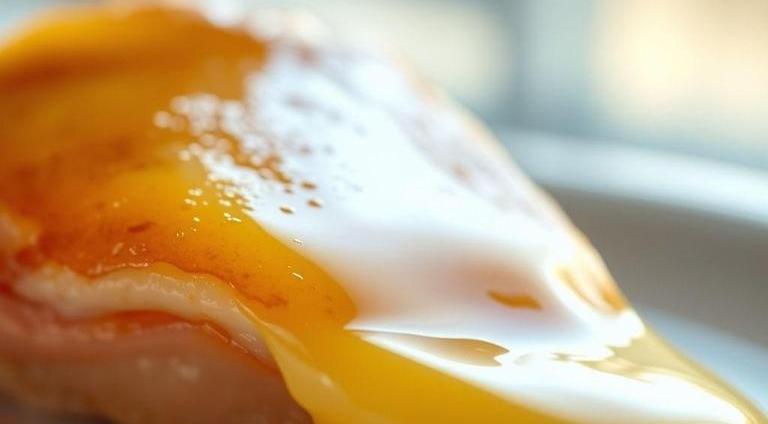Chicken fat, also known as schmaltz, is a flavorful cooking fat that has been used in kitchens for centuries, particularly in Jewish cuisine. It’s made by rendering the fat from chicken skin and skin-on cuts, and it’s prized for its rich taste and versatility. Whether you use it to fry potatoes, sauté vegetables, or season grains, chicken fat adds a savory, umami punch to dishes. But what happens when chicken fat starts to sit around for too long? Can it go bad? Well, just like any fat or oil, chicken fat doesn’t last indefinitely. Understanding how to store it and recognizing the signs of spoilage can help you avoid wasting this valuable ingredient.
Can Chicken Fat Go Bad?
Absolutely, chicken fat can go bad. While it has a longer shelf life than many other types of fat due to its high-fat content, it is still prone to degradation. Over time, fats oxidize and break down, leading to changes in flavor, texture, and smell. When properly stored, rendered chicken fat can last a while, but improper storage, exposure to heat, light, and air, or contamination by bacteria can cause it to spoil. Understanding how chicken fat deteriorates is key to maintaining its quality for as long as possible.
- Oxidation: When fat is exposed to air, it undergoes oxidation, which can cause it to become rancid. This process can produce off flavors and unpleasant smells.
- Bacterial Growth: If the fat is contaminated by bacteria, such as when it’s not stored in a clean container, it can spoil rapidly.
- Improper Temperature: Storing chicken fat at room temperature or in a warm environment accelerates spoilage. Cool temperatures, like refrigeration, are crucial to extend its shelf life.
Shelf Life For Chicken Fat

The shelf life of chicken fat depends on a few factors, such as how it’s stored and whether it’s been strained or contaminated. However, in general:
- In the Refrigerator: If stored properly in an airtight container, chicken fat can last for up to 6 months in the fridge. The cold slows down oxidation and prevents bacterial growth, making the fridge the ideal place to store your rendered fat.
- In the Freezer: Freezing chicken fat can extend its shelf life even further, allowing it to last for up to 1 year. It’s best to portion the fat into smaller containers or ice cube trays so you can defrost only what you need at a time. When frozen, the fat retains its quality and flavor much longer, though the texture might change slightly upon thawing.
- At Room Temperature: While some people choose to keep chicken fat out at room temperature for easy access, it’s not recommended for long-term storage. If left unrefrigerated, chicken fat can spoil in just a few days to a week, depending on the ambient temperature and exposure to light and air.
Common Signs Of Spoilage
Knowing when chicken fat has gone bad can be tricky since it’s solid at cooler temperatures and doesn’t always show signs of spoilage right away. However, there are a few telltale signs that your chicken fat is no longer good to use:
- Off Smell: Fresh chicken fat should have a mild, savory aroma. If it smells sour, rancid, or like old grease, it’s likely spoiled. The smell will be more pronounced the longer it has been sitting out or improperly stored.
- Color Change: When chicken fat begins to go bad, its color may change from a pale, golden yellow to a darker, off-putting shade. If the fat turns brown or darkens significantly, this is a red flag that it has oxidized and may not be safe to use.
- Rancid Taste: If you’ve stored chicken fat for a long time and are unsure about its freshness, the best way to check is by tasting it. Rancid chicken fat will have a bitter, sour, or otherwise unpleasant taste. It’s best to dispose of it if the taste is off.
- Mold or Unusual Texture: Mold is a rare occurrence in chicken fat, but it can happen if the fat is exposed to moisture or contamination. If you notice any mold growth, it’s time to toss it out. Similarly, if the fat’s texture becomes slimy or excessively greasy, that could indicate spoilage.
- Separation or Excessive Clumping: While some minor separation of fat from the solids (like bits of chicken skin) is normal, if the fat starts separating in an unusual way or if it becomes overly clumpy, it could indicate that it’s past its prime.
How To Store Chicken Fat?

Proper storage of chicken fat is essential to prolonging its shelf life and maintaining its quality. Here’s a detailed guide on how to store it:
- Cool it Down First: After rendering the chicken fat, allow it to cool to room temperature. Placing hot fat directly into the fridge can cause condensation, which can introduce moisture and promote spoilage.
- Use Airtight Containers: Whether you’re storing chicken fat in the fridge or freezer, always use airtight containers to minimize exposure to air. Glass jars with tight-fitting lids or vacuum-sealed bags are ideal. You can also use freezer-safe plastic containers or silicone bags for freezing.
- Strain Before Storing: If you haven’t already done so, strain the rendered fat through a fine-mesh sieve or cheesecloth to remove any leftover bits of chicken skin or solids. This helps the fat last longer and prevents contamination.
- Portion for Convenience: If you plan on freezing your chicken fat, portion it into smaller quantities. This way, you can thaw only what you need without having to re-freeze any leftovers, which can degrade the fat’s quality.
- Avoid Frequent Opening: When using stored chicken fat, try to avoid opening the container too often. Every time you open the lid, you’re introducing air and potentially moisture, which can speed up spoilage. Use a clean utensil each time you take some out.
Expert Tips
- Flavor Boost: For an extra depth of flavor, some people infuse chicken fat with herbs or spices (like garlic, rosemary, or thyme) while rendering. If you do this, make sure the herbs are removed before storing to avoid bacterial growth.
- Avoid Cross-Contamination: Always use clean utensils and containers when handling chicken fat to prevent contamination with bacteria, which could lead to faster spoilage. Never dip your fingers or a dirty spoon into your fat storage container.
- Use Old Fat for Cooking: When it comes time to use your chicken fat, keep in mind that older rendered fat (but not rancid or spoiled) may work better for deep frying or other high-heat cooking methods, as it has already been rendered down and is less likely to burn.
- Watch for Clear Fat: In chicken fat, the more ’clear’ or translucent the fat, the better it has been rendered and the longer it tends to last. Cloudy or overly chunky fat might indicate that the rendering process wasn’t done properly.
FAQs
How Long Does Chicken Fat Last Before Going Bad?
Chicken fat can last up to 6 months in the refrigerator if stored in an airtight container. If stored in the freezer, it can last for up to a year.
What Are The Signs That Chicken Fat Has Gone Bad?
The primary signs that chicken fat has gone bad include an off smell, changes in color (such as turning yellow or rancid), and the appearance of mold. If the fat has a sour or rancid odor, it’s best to discard it.
Can Chicken Fat Go Bad If It’s Stored At Room Temperature?
Yes, chicken fat can go bad if left at room temperature for an extended period, especially if the room is warm. It’s recommended to store chicken fat in the refrigerator or freezer to prolong its shelf life.
Is It Safe To Consume Chicken Fat That’s Been Stored For A Long Time?
While chicken fat that has been stored for a long time may not pose an immediate health risk if it’s been kept cold and free of contaminants, it can lose its flavor and nutritional quality. If the fat shows signs of spoilage, it’s better to discard it.
How Should Chicken Fat Be Stored To Prevent It From Going Bad?
To prevent chicken fat from going bad, store it in an airtight container in the refrigerator for short-term use. For long-term storage, freeze it in smaller portions. Always ensure that the fat is cooled before storing.
Can Chicken Fat Be Reused After It Has Gone Bad?
No, once chicken fat has gone bad, it is no longer safe to consume or reuse. Spoiled fat may contain harmful bacteria or toxins, which could lead to foodborne illness.
Does Chicken Fat Go Bad Faster Than Other Animal Fats?
Chicken fat can go bad at a similar rate to other animal fats, such as pork or beef fat, but it may have a slightly shorter shelf life due to its higher water content and lower saturation compared to other fats.
Can Chicken Fat Be Used Past Its Expiration Date?
Using chicken fat past its expiration date is not recommended, as the quality and safety of the fat may have deteriorated. Always check for signs of spoilage, such as odor or discoloration, before using it.
How Can I Tell If Chicken Fat Is Rancid?
Rancid chicken fat will typically have a strong, unpleasant odor. It may also have a bitter or sour taste and a change in texture. If the fat is discolored or shows mold, it should be discarded immediately.
Can I Use Chicken Fat That’s Been Stored In The Freezer For A Long Time?
If chicken fat has been stored in the freezer for a long time (up to a year), it can still be safe to use, but its flavor and texture may be compromised. Always check for signs of freezer burn or spoilage before use.